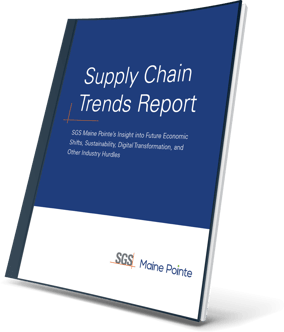Post-Acquisition Integration
Due diligence before an acquisition reveals potential synergies that will improve productivity, profits, and EBITDA. Post-acquisition integration is the time when that potential can turn into reality by using such techniques as sales, inventory, and operations management, modularization, strategic sourcing, and geographic optionality.
Among other benefits, a well managed integration has the ability to:
- Increase operational efficiency
- Expand market reach
- Strengthen the workforce
- Promote innovation and knowledge sharing
- Provide competitive advantage
- Enable long-term value creation.
However, those benefits only emerge when the entire, end-to-end supply chain is examined and strategic changes are made as needed to planning, procurement, operations, and logistics.
How planning shifts post-acquisition
Every company needs a sales, inventory, and operations planning (SIOP) process, but that process may differ between companies or be entirely absent. Particularly after an integration, communication between key leaders is essential to create a plan based on uniform goals and KPIs.
However, as a company grows, communication becomes more complex. Differences arise in communication styles and management practices, even in languages. Silos solidify. Misunderstandings lead to delays and mistakes. The customers and suppliers of each organization may also have different ideas of quality, timeliness, and confidentiality.
For example, a successful aerospace company with commercial clients merged with a successful aerospace company with military clients. They had very different cultures and yet now they had to work together. That goal required expertise in collaboration, standardization, negotiation, and governance.
Value stream mapping helped the new company work as a unit to define such terms as “integrity” and on time in full (OTIF). Process mapping documented how each work stream approached its tasks; it clarified the 25% of work stream variances so that compromises could be worked out. A master schedule kept everyone on track. The results included a 25% boost in synergy savings over and above what the company expected before integration.
How procurement shifts post-acquisition
While procurement styles may vary, a procurement management operating system can help to create standardized practices post-acquisition. One difficulty that the newly merged companies may face is deciding which are the best, most cost-effective suppliers and weeding out the others. Each company will have their preferences and will want to champion their legacy suppliers.
Another difficulty arises from making sure that procurement is viewed as a strategic partner that handles supplier relationship management, including optionality and communications. If one company in the merger is not comfortable with that, procurement may descend to a purely transaction role, to the detriment of both organizations.
One company experienced both issues. As the result of a reverse merger, the company merged with a carved-out organization that lacked procurement. The company itself was family owned and had an immature procurement department. Demand quickly began to erode due to the high cost of goods sold (COGS) compared to the competition.
Procurement was upgraded and upskilled. An ORCI strategy clarifying owner, responsible, consult, and inform roles. With new strategies such as supplier optionality and strategic sourcing, procurement was able to reduce COGS 9% and bill of materials 20%, achieving $30 million in savings in year 1 and acquiring a roadmap to an additional $32 million or more.
How operations shift post-acquisition
Once again, as a company grows and more business units are integrated, practices, processes, and skills can diverge wildly. Incentives for knowledge sharing may be lacking. A breakdown of silos, clear ORCI roles, well-defined KPIs, and common goals are minimum requirements.
Post-acquisition integration may require adjustments to a company’s make identity and manufacturing practices. Now that the company has different resources, what products should be made in house and what should be out-sourced? A C3 analysis of cost, capacity, and capability helps to assess and re-orient the make identify. Can manufacturing be made more efficient and cost-effective? Quality, productivity, and cost savings receive a boost from modularization and standardization of parts and raw materials, integration of technologies, design for excellence (DfX), and similar initiatives.
A chemical company wanted to ensure the well-being of one of its business units. While some improvements had already been made, the company knew there must be more opportunities.
A management operating system (MOS) monitored performance daily and weekly to drive the attainment of plant goals. A master production schedule drove accountability and provided the metrics that allowed for continuous improvement. A system was developed to collect and recycle line and tank flushes, reducing waste and the cost of raw materials. At the end of 17 weeks, the business unit had cut manufacturing costs by 10% and improved EBITDA by 26% for the long term.
How logistics shift post-acquisition
Integrating warehouses and inventory can be challenging post-acquisition. A capacity assessment pinpoints where over- or under-capacity now occurs. Inventory management practices help to identify and control excess and obsolete (E&O) inventory, prevent stockouts, and bring down the cost of goods sold (COGS).
Geographic optionality carefully analyzes where it would be best to move, consolidate, or build capacity. That evaluation takes into account not just proximity to customers or suppliers, but also the likelihood of supply chain interruptions, loss of intellectual property, or excessive tariffs, among other issues.
Transportation modes and decisions should also come under scrutiny. Carbon emissions, costs, efficiency, effect of using 3PL suppliers, customs regulations, and overage charges are all important considerations.
When a PE firm acquired a specialty chemical company, they argued for their preferred logistics suppliers but the company was adamant about keeping their legacy supplier. Clear data resolved the issue. SGS Maine Pointe sent an RFP to several logistics companies. Among all of them, the PE’s preferred partner came in first, and the specialty chemical company approved the change.
An acquisition should create long-term value but that can only happen if the entire plan-make-buy-move supply chain is examined for opportunities and if the newly merged organization works together smoothly. By upgrading planning, procurement, operations, and logistics through proven strategies, a true post-acquisition integration ensures increased profits, EBITDA, and growth.
Related Resources
Ready to improve your consumer demand forecasting?

Talk to us
From rapid sprints for short-term gains to transformation for competitive advantage we are here to get you there.
Schedule a discussion
Submit this form to speak to an SGS Maine Pointe representative.
Prefer a call? (781) 934 - 5569




